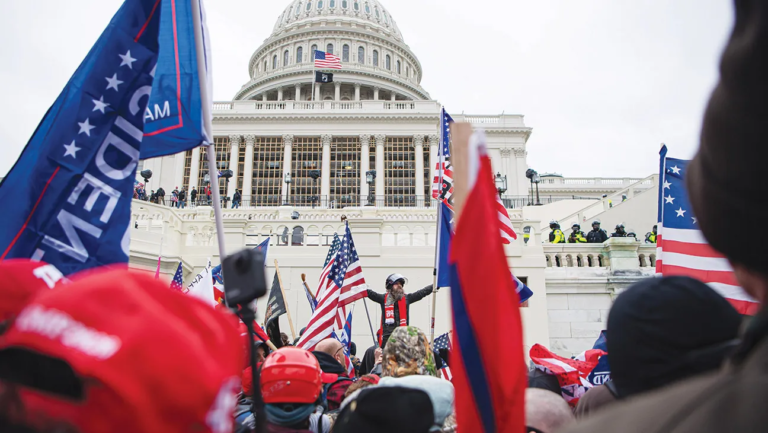In a shocking revelation, the true identity of one of the most notorious Capitol rioters, known as “Swedish Scarf” due to his distinctive neckwear, has finally been uncovered. This individual’s journey from aspiring actor to participant in the January 6th riots and subsequent inclusion on the FBI’s wanted list is a perplexing and troubling tale.
Despite the efforts of law enforcement, the real name of Swedish Scarf remained elusive for a significant period. Even after being identified as a member of a right-wing activist group in Los Angeles, his true identity remained unknown. It was only when the Department of Justice indicted Swedish Scarf and two other members of the activist group in November 2021 that his name was finally revealed, albeit with redactions in the court documents.
The path that led Swedish Scarf to the Capitol on that fateful day is a complex one. Friends and acquaintances recall his defiance towards authority dating back to his elementary school days. While well-liked by his peers, he had a reputation for getting into trouble and challenging the status quo. This rebellious streak seemed to persist throughout his life, with instances of him finding himself in places where he didn’t belong, often with a comical or charming demeanor.
Swedish Scarf’s involvement in the Capitol riots came as a shock to those who knew him. His former girlfriend, who had once joked about him storming the Capitol, expressed her heartbreak upon learning of his participation. It was a stark departure from his usual antics, leaving many questioning what could have driven him to such extreme actions.
Attempts to reach Swedish Scarf for comment have been unsuccessful, and even his mother has had no contact with him since before January 6th. Childhood friends recall signs of a tense home life, and his journey through various service sector jobs in Los Angeles suggests a struggle to establish himself as an actor. He seemed eager to hide this reality from those who didn’t already know about it, adding another layer of complexity to his story.
The Beverly Hills Freedom Rally, a weekly gathering in opposition to lockdown policies, played a significant role in Swedish Scarf’s radicalization. The event grew in size and attracted a diverse range of participants, including those with extremist views. Swedish Scarf’s involvement in these rallies, along with his increasingly conspiratorial beliefs, further fueled his descent into extremism.
The events of January 6th marked a turning point for Swedish Scarf and his associates. The violence that erupted that day shocked many, including those who had previously engaged in peaceful protests. The consequences of their actions became apparent, leading some to reconsider their involvement. Swedish Scarf canceled his return flight and took steps to erase evidence of his participation, according to court documents.
The story of Swedish Scarf serves as a cautionary tale, highlighting the potential for radicalization and the dangers of extremist ideologies. It also raises important questions about the factors that contribute to an individual’s path towards violence and the role of personal circumstances and external influences.
As investigations into the Capitol riots continue, it is crucial to understand the complex web of motivations and circumstances that led individuals like Swedish Scarf to participate in such destructive acts. By examining these stories, society can work towards preventing future incidents and addressing the underlying issues that contribute to extremism.

